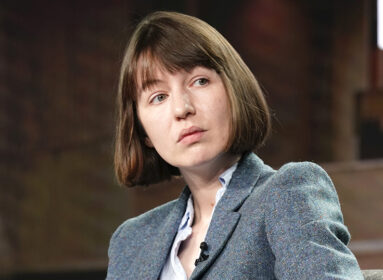
Five Connecticut residents join latest North American wave of Israeli immigrants
By Cindy Mindell
Despite the current wave of terror attacks against Israelis, an El Al flight carrying 65 new immigrants — olim in Hebrew — from the U.S. and Canada landed at Ben Gurion International Airport on Oct. 14.
The group of new immigrants was organized by Nefesh B’Nefesh (NBN), in cooperation with Israel’s Ministry of Aliyah and Immigrant Absorption, the Jewish Agency for Israel, Keren Kayemet Le’Yisrael, and JNF-USA. Founded in 2002, NBN seeks to revitalize aliyah from North America and the UK by removing or minimizing the financial, professional, logistical, and social obstacles inherent in the immigration process. The support provided by NBN to nearly 45,000 North American immigrants has ensured that more than 90 percent have remained in Israel.
The olim on the Oct. 14 flight ranged in age from 10 months to 83, and came from 13 states and provinces across North America, including Arizona, California, Colorado, Connecticut, Florida, Georgia, New York, New Jersey, Illinois, Maine, Maryland, Ohio, and Quebec.
Among the passengers were five young men and women who are volunteering to serve in the Israel Defense Forces (IDF) as Lone Soldiers – those who immigrate to Israel without any immediate family. Twenty of the passengers are moving to the south of Israel as part of NBN and Keren Kayemet Le’Yisrael’s Go North and Go South programs that settle immigrants in Israel’s developing periphery.
“We are truly inspired that despite the extremely difficult times Israel is currently experiencing, olim are undeterred and are still making aliyah,” says NBN co-founder and executive director Rabbi Yehoshua Fass. “They are coming not only with the desire to build their homes and lives in Israel, but to express that modern-day Zionism is thriving, while displaying their deep responsibility towards the State of Israel and the Jewish people.”
In fact, the numbers would appear to support Fass’ claim that the current wave of terror attacks is not staunching the flow of new immigrants to the Jewish states. According to the Jewish Agency, some 26,500 new immigrants arrived in Israel in 2014, the highest number in 13 years and an increase of 39 percent over 2013. This year, the Ministry of Aliyah and Immigrant Absorption expects to resettle more than 30,000 olim, the majority from France and Ukraine. In the first half of 2015, Israel saw the arrival of 3,450 Ukrainians and 2,592 French, as well as 2,958 Russians. So far this year, Nefesh B’Nefesh has shepherded just over 800 North American immigrants to Israel.
To be sure, new immigrants from some countries – especially France — are making aliyah to escape threats to their safety at home – but others, such as North Americans, appear to be immigrating purely out of sense of love and loyalty to the Jewish state.
Among the new olim are five former Connecticut residents, who are all experiencing the ups and downs of acculturation. Recently, the Ledger spoke with them about their move.

Upon their arrival at Ben Gurion Airport, Beth and David Cohen are greeted by their son, Ilan, his wife Anna, and their daughters, Maayan and Elishev. Nefesh b’Nefesh photo credit: Ben Kelmer
Beth and David Cohen made aliyah after living in Stamford for 42 years. A West Hartford native and 1974 graduate of UConn School of Law, David joined the state’s attorney office in 1978. In June, he retired as State’s Attorney for the Stamford/Norwalk Judicial District.
Beth is an occupational therapist specializing in working with children from birth to age three. She retired in June after working for 40 years in the field, the last 20 at STAR Inc. – Lighting the Way in Norwalk.
The Cohens were both active in the Greater Stamford Jewish community. They were involved at Congregation Agudath Sholom in Stamford, where they each served on the board of directors, among other synagogue activities. Beth was a member of the Stamford Chevra Kadisha; David was a volunteer teacher at Bi-Cultural Day School in Stamford.
“Aliyah was always a dream,” says Beth. “We have many family and friends in Israel and visited quite often. Leaving to return to the States after a visit was always hard.”
In 2006, the Cohens’ youngest son made aliyah, got married, and now has two daughters, which created another incentive. “When retirement age approached, we decided that now was the time, especially as our second granddaughter was born in August,” says David, “although it certainly wasn’t easy leaving two adult children and many, many close friends.”
In addition to navigating the bureaucratic details of the new immigrant, the Cohens are also studying Hebrew in an ulpan.
“The biggest challenge is trying to adapt as quickly as possible to new situations, and realizing that things are done differently from what we were used to,” says David, “whether it is grocery shopping or health care or banking, etc. etc.”
Several years ago, the Cohens bought an apartment in a new Jerusalem development still under construction, and will spend the next few months in a rented apartment until their home is ready. They chose the capital city for its proximity to family and friends, “and because there is something special about living in this place, like nowhere else,” says Beth. “Being so close to all the spiritual and cultural activities available in Jerusalem makes living here truly a unique experience.”

New olim Gary Broder (left) and Kathi Handler (left) with Marsha and Alan Stein, fellow former Waterbury residents who made aliyah a year ago and live in Netanya. Nefesh b’Nefesh photo credit: Ben Kelmer
Gary Broder and Kathi Handler immigrated from Waterbury. Broder is a native of the Brass City, where he attended local schools before graduating from UConn and UConn School of Law. He returned to his home town to practice law for 40 years. Handler operated an online rare- and used-book business.
Broder was a life-long member of the Conservative Beth El Synagogue in Waterbury, until the past year, when he attended B’nai Shalom Synagogue, an Orthodox congregation in the city. He is a past president of The Federation, Jewish Communities of Western Connecticut.
“We always wanted to live in Israel for Zionistic and religious reasons,” Broder says. Now that he and Handler are both retired, the time seemed right to make aliyah. The couple moved to Tzfat. “It is a beautiful location with lots of greenery, mountains, and milder climate,” Broder says. “It is also a wonderful religious community with a wide variety of Jews from all over the world, including a large English-speaking network. People here are peaceful and welcoming.”
Broder and Handler plan to volunteer for local organizations and take advantage of the many religious-education opportunities in Tzfat, as well as study Hebrew in an ulpan.
While the challenges they face are the usual ones – opening bank accounts, home-shopping, getting their mail, there are many perks as well, like “the amazing beauty of Tzfat and the overwhelming warmth of its citizens,” Broder says. “We immediately were invited to many dinners, study groups, and social events upon arriving. Everyone says, ‘Welcome, glad you came. You are heroes.’ There are many stairways and steps in Tzfat to climb up and down the mountain and we will have to become healthier, whether we like it or not. The air and water are very clean and fresh.”
Malka Russell is a 2013 graduate of Hebrew High School of New England in West Hartford. After graduating in 2013 from Hebrew High School of New England in West Hartford, she completed a year of national service (Sherut Leumi) in Israel, “which I felt I owed to my nation and land,” she says. She then decided to make aliyah. “Moving to Israel has connected me to a much larger story in world history and Jewish history,” says Russell, who is studying in the Hebrew University of Jerusalem Preparatory Program-Mechina for international students.
“I wanted to begin planting roots in Israel and attending college here so I could eventually start my career, and create a life and family for myself. I am learning that ‘family’ comes in many different forms.”
Russell lives in Nachlaot, a downtown-Jerusalem neighborhood established by Sir Moses Montefiore in the late 19th century, and next to the famed open market, Shuk Machaneh Yehuda. “I love the people and energy here!” she says. “Living right off the shuk and in the city center is amazing and full of life.”
Like any immigrant, Russell faces the challenges of acculturation, like creating a new routine and handling a university workload in a new language. “Getting over-charged at the local supermarket because of your American accent is frustrating, and navigating through all the bureaucratic offices is exhausting,” she says. “But there are moments that make it all worth it. I love busy Friday mornings and peaceful Friday evenings in Jerusalem. I love living my days knowing I am connecting to a rich history!”
Nefesh B’Nefesh’s Rabbi Yehoshua Fass praises the North American olim. “Their choice to leave a comfortable life and move to Israel, and even more so in these times, is an important contribution to Israel’s strength and national morale,” he says. “We are proud to accompany each immigrant through the aliyah process and will use all means at our disposal to ensure their successful absorption and acclimatization to Israeli society.”
Headed for the Jewish homeland: 9,000 Ethiopian Jews
By Ben Sales
TEL AVIV (JTA) – The Israeli government has approved entry of the “last” group of Ethiopian Jews awaiting immigration to Israel.
The move comes two years after the arrival of 450 Ethiopian Jews then deemed to be the “last” such group. Indeed, there have been several groups said to be the last since Ethiopian immigration began in the 1970s.
The initial wave was supposed to have ended with a giant military-style operation in 1991. Then Ethiopian aliyah “ended” again, in 1998. Then again in 2008. And again in 2010. Each time, advocates of continuing Ethiopian immigration prevailed upon the government to let in not just more Jews, but other groups with Jewish ancestry.
But when the new arrivals hit Israel, they’ll encounter a whole new set of challenges. Ethiopian-Israelis lag in employment, wages and education, and have protested what they call institutional discrimination.
“The need is not to just bring olim to the land, but to invest in their integration,” said Roni Akale, director-general of the Ethiopian National Project, which develops educational programs for Ethiopian youth. “If they don’t invest, there will be damage. The state needs to take care of them.”
Here’s who Israel’s 135,000 Ethiopian Jews are, why their aliyah has taken more than 30 years and how the immigrants have fared.
Jews have lived in Ethiopia for 3,000 years.
Many believe that Jews first arrived in Ethiopia three millennia ago after splitting off from King Solomon’s ancient Jewish kingdom. Since then, Ethiopian Judaism developed mostly in isolation from the rest of world Jewry. Ethiopian Jews do not celebrate post-biblical holidays like Chanukah and Purim, and they maintain their own unique celebrations, like the fall festival of Sigd.
Successive Ethiopian governments persecuted the Jews, leaving them impoverished and relatively isolated in agrarian communities amid the country’s northern mountains. Contacts with outside Jewry increased in the 20th century. In 1973, Ovadia Yosef, then Sephardic chief rabbi of Israel, ruled that the Ethiopian community was Jewish, paving the way for their immigration.
Thousands came to Israel via military operations.
Ethiopian aliyah began with a trickle in 1977. Between 1984 and 1985, thousands of Ethiopian Jews fleeing famine crossed into Sudan. From there, in a mission called Operation Moses, Israeli Defense Forces planes airlifted about 8,000 to Israel. In 1991, with Ethiopia’s government on the cusp of being overthrown by rebel groups, mass aliyah resumed with the clandestine Operation Solomon, which brought 14,500 Jews to Israel on 40 flights in just 36 hours. Some of the flights held double their normal capacity to save time.
Debates over who is an Ethiopian Jew have drawn out the aliyah process.
After Operation Solomon, advocates for the community urged the government to let another group of Ethiopians move to Israel. The group, whose members are known as Falash Mura, has Jewish ancestry but is descended from Ethiopians who converted to Christianity about a century ago. Some Israeli officials opposed the aliyah of the Falash Mura, saying their ties to Judaism were too weak. But in the 1990s and 2000s, successive governments brought waves of Falash Mura to Israel, who underwent formal conversion to Judaism after their arrival.
Experts say this wave may really be the end of Ethiopian aliyah because it includes every Falash Mura known to Israel. Its primary purpose, according to the government, is to reunite families split by earlier immigrations. To qualify for this round, candidates need to have family in Israel and arrived in pre-aliyah compounds in Ethiopia run by the Jewish Agency by the start of 2010.
Ethiopian-Israelis lag in education and employment.
For many Ethiopians, getting to Israel is only half the battle. Ethiopian immigrants, often from poor and uneducated families, have struggled to integrate.
According to data compiled by the Myers-JDC-Brookdale Institute, a government-sponsored think tank, as of 2013 only 27 percent of Ethiopian-Israeli students qualified for university, as opposed to 51 percent of all Israelis. Average wages for Ethiopian-Israelis were more than a third lower than the Israeli average.
Ethiopian-Israelis claim that state institutions discriminate against them. Following the emergence earlier this year of a video showing police officers beating an Ethiopian-Israeli soldier, Ethiopians massed in protest. Police responded with stun guns and a water cannon. Following the unrest, Prime Minister Benjamin Netanyahu promised to take steps to address the discrimination.
“Among the general population, I’m sure there are some stereotypes, prejudices that affect access to employment,” said Myers-JDC-Brookdale director Jack Habib. “How much of that is perception and how much of that is reality we don’t know. But there are these strong feelings of discrimination. It’s not an issue we can ignore.”








 Southern New England Jewish Ledger
Southern New England Jewish Ledger









